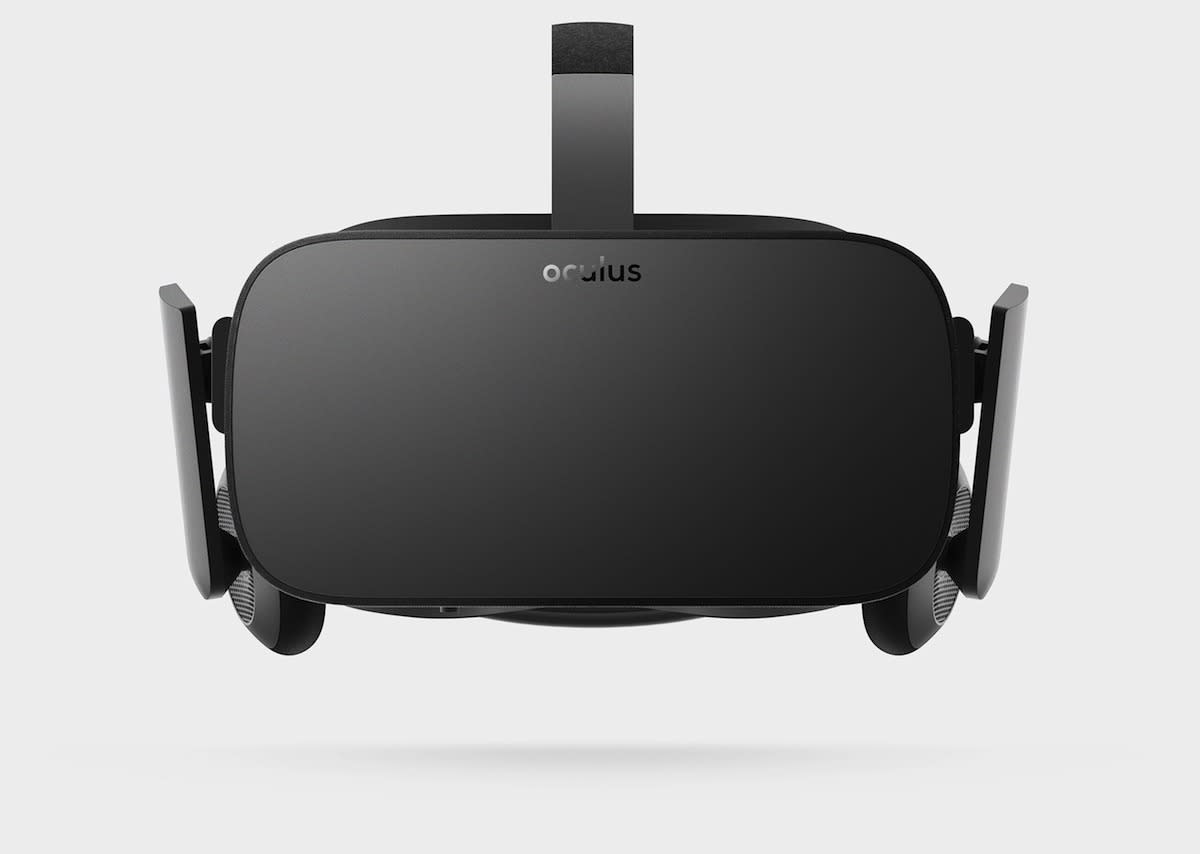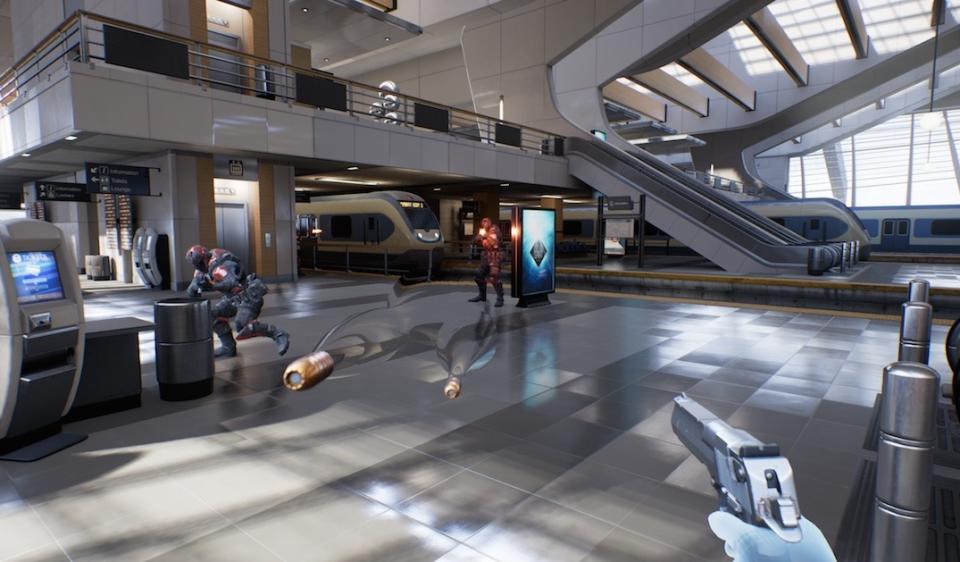Virtual Reality’s Biggest Hurdle: You Have to See It to Believe It

Image: Oculus
The consumer version of Samsung’s Gear VR is due out in November. The Oculus Rift arrives in the first few months of 2016. The PlayStation VR isn’t far off, nor is Valve’s vaunted Vive system.
VR is coming. But despite loads of people singing its praises, the world still doesn’t seem ready for it.
Most of the world, that is. Ask those who have tried a recent version of the Oculus Rift, and they will likely gush about VR. But ask those who have yet to strap on a Rift, and they will likely denounce it, perhaps invoking devices like Nintendo’s awful Virtual Boy as proof that this stuff is bound to be just another passing fad. VR’s past is messy, and it’s not easy to change people’s minds about it.
That’s because it’s difficult to do justice to the experiences found on these new headsets. I’ve written plenty about VR, and I usually sound like a lunatic. “And the monster was this close to me! I mean it was huge! I was terrified!” Yes, yes, Ben, we understand, you saw a scary monster in a video game. Exciting. Even video footage fails to account for the transformative sensory immersion of wearing a Rift.
That’s a problem. A big one. And it’s one that no one quite seems to know how to solve.

Photo: Getty Images
“You have to physically see this,” Max Cohen, VP of Mobile at Oculus, told me during a chat at last week’s Oculus Connect 2 conference in Los Angeles. “The best TV commercial in the world will make you say, ‘That looks cool… but I need a demo.’”
This disconnect isn’t as pronounced in other media. Watch a trailer for Star Wars: The Force Awakens and it gives you a pretty good sense of what you’re in for since you’re already familiar with the experience of watching a movie. Read a preview of Halo 5: Guardians and you’ll learn all about the game’s mechanics, at least enough to accurately visualize playing it. After all, you probably played Halo 4 on the same TV you’ll use for the sequel. Your mind doesn’t need to make much of a leap to guess how Halo 5 will make you feel.
But how can I explain why looking around a virtual cockpit and dogfighting with spaceships in a game like Eve Valkyrie is so profound? How can I relate the surprisingly tactile experience of sculpting a 3D ball of clay with my hands in the VR paint program Oculus Medium? How can I impress upon you that watching the gorgeous, Pixar-quality animated short Henry, which I viewed while sitting inside the titular hedgehog star’s virtual living room, makes even the fanciest 2D films seem so… prehistoric?
“It’s hard,” said Elizabeth Hamren, the head of marketing for Oculus. “It’s hard to write about and talk about. Even in videos — how do you show a truly immersive experience in 2D? You’re always selling it short.”

Photo: Ben Silverman
The company is hopeful that the Gear VR will help. The device, which works with select Samsung smartphones, is a portable VR headset. While Gear VR lacks some of the finesse and sheer power of the Rift, the fact that you can toss it in your backpack, pop in a phone, and throw on some headphones for a little VR on the go makes it something of a gateway drug.
“The portability of mobile VR will go a long way toward getting people to understand what’s available on the Rift,” Cohen says. “The last hurdle is exposure. It’s hard to know how life-changing VR can be until you’ve tried it.”
Unfortunately, the Gear VR will reach a pretty limited audience. The consumer version will only work with Samsung phones released in 2015: the Note 5, S6, S6 Edge, and S6 Edge+. Even if you see a friend with one and are intrigued, the chances of you already owning a compatible device (or happily plunking down coin for a new one) are somewhat slim. But Cohen raises a good point: It’s hard to gauge how much interest there is in these devices when the big three — the Rift, Sony’s PlayStation VR, and Valve’s Vive — have yet to actually come out.

Image: Epic Games
Even Tim Sweeney, the CEO and founder of developer Epic Games, understands that it’s an uphill climb.
“I’ve never met a VR skeptic who’s actually tried VR,” he told me at Oculus Connect. “All of the skeptics are judging it based on the idea. And the trouble is you can’t really describe it in words. Someone once said that writing about music was like dancing about architecture. [Ed. – I think that was Martin Mull]. It’s similar with VR.”
Epic is responsible for some of the Rift’s most impressive demos. Last year it released a terrifying VR sequence putting viewers face to face with Smaug, the dragon from The Hobbit. At Oculus Connect, the company showed off a more traditional game experience in Bullet Train. Using the Oculus Touch controllers, players could slow down time and pluck bullets out of the air to toss back at enemies. It’s awesome (I’m not going to try to explain why).
Sweeney is so convinced of VR’s potential, he’s taking Epic all-in.
“We see this as the future of computing,” he said. “I think the magnitude of the market is going to grow exponentially over time. We’re going full speed ahead.”

Photo: Facebook
One obvious solution to the marketing issue? Setting up demo kiosks in games and electronic stores, which is an easy move for both Oculus and PlayStation VR (Valve’s Vive, however, requires a lot more space). But I’m not sure that’s pragmatic. You need a quiet, safe place to try these things. I don’t know if the middle of a Best Buy really sells VR the right way.
Of course, Oculus is owned by Facebook, and Facebook has pretty much all of the money. Mark Zuckerberg himself made a brief appearance at Oculus Connect, calling VR “the next great technology platform that will define how we all connect” and noting that his company is “committed to this for the long-term.” Perhaps an official Oculus retail store is in the cards?
Ask Oculus, and the company isn’t really sweating it just yet. Nate Mitchell, VP of product, likens the slow acceptance of VR to other big technology products.
“At the end of the day, I think that if you look at many of the most successful consumer hardware products of all time, most of them sold in the very low millions of units in their first year — especially new product categories, things like Kindle and iPod,” he told game site Gamasutra. They sold in the hundreds of thousands in their first generation.”
Barring a significant change in the way the Rift is being marketed, a few hundred thousand might be the best case scenario for the first wave of VR, too. At least until the rest of the world gets a chance to strap on a headset and, like crazy tech writers and starry-eyed developers, gazes into the future.
When Ben isn’t staring into a headset, he’s staring into the abyss of Twitter.


